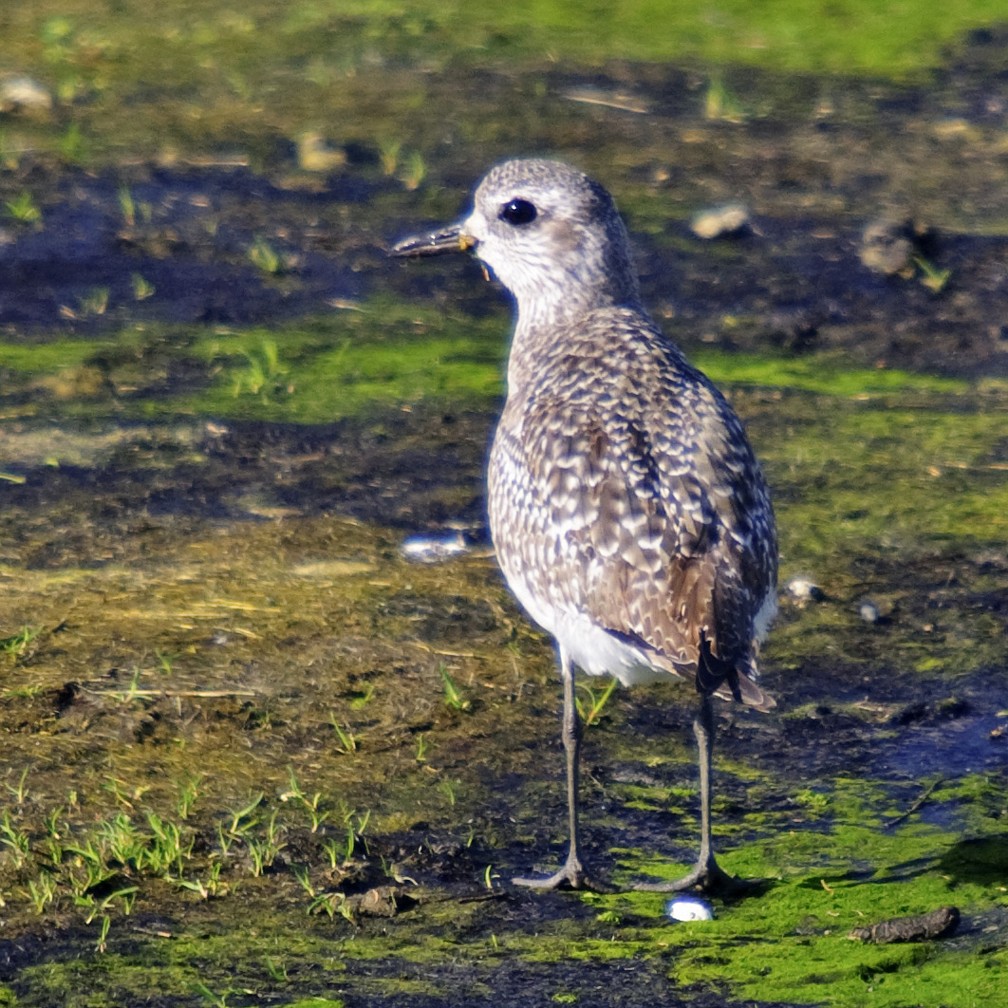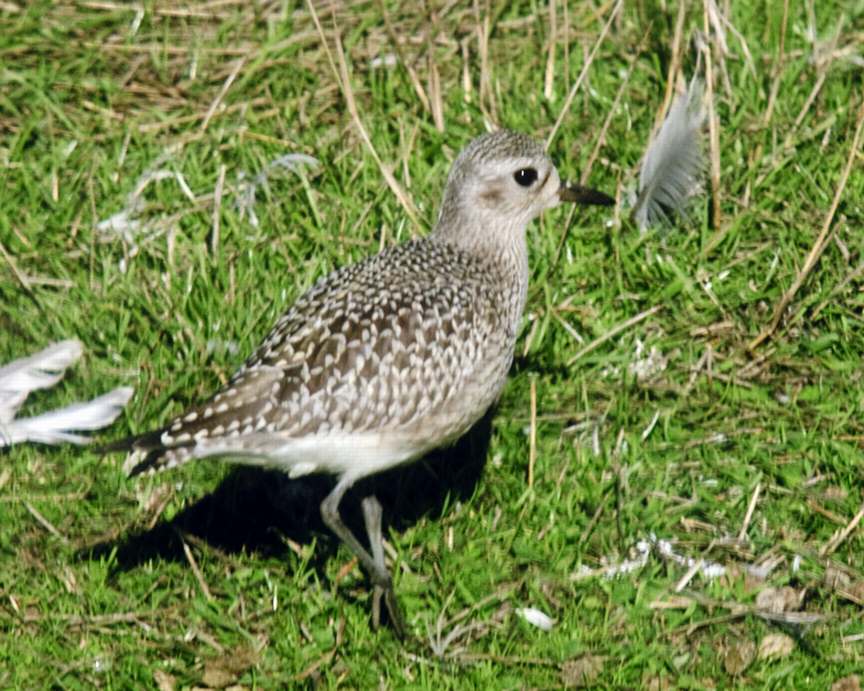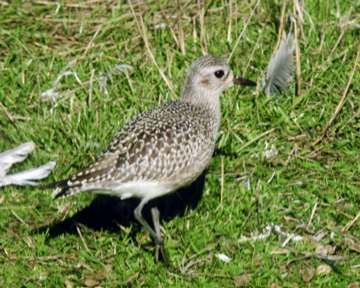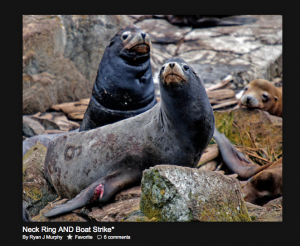| Pluvialis squatarola at Race Rocks, September 28, 2009. |
| This is our first photo of this plover, taken by Ryan Murphy |
Ryan photographed these plovers in their non-breeding plumage (missing the black belly!) on the lawn at Race Rocks. The top one o was here on March 11, 2010.
These are long-distance migratory birds. They were here as a stopover on the migration, fall and spring. They breed on the arctic tundra and winter on sandy beaches and wetlands in coastal areas from central North America through southern South America. They use the run, stop and stab at the food behaviour common to many plovers.
Domain Eukarya
Kingdom Animalia
Phylum Chordata
Subphylum Vertebrata
Class Aves
Order Charadriiformes
Family Charadriidae
Subfamily Charadrinae
Genus Pluvialis
Species squatarola
(Linnaeus, 1758)
Common Name: Black Bellied Plover
Other Members of the Class Aves at Race Rocks.
and Image File |
| April 2009 Ryan Murphy |




